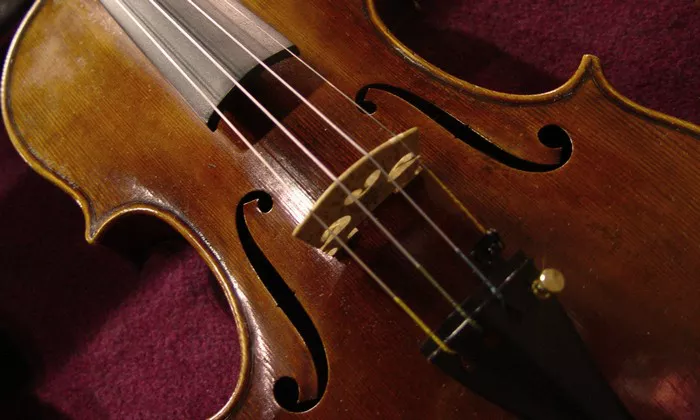A violin is a complex instrument with several crucial components that contribute to its sound quality. Understanding these components is essential for making a violin sound good. The violin consists of the body, neck, strings, bridge, soundpost, and bow. Each element plays a vital role in producing rich, resonant tones. Proper maintenance and adjustment of these components are necessary to optimize the violin’s sound quality.
Essential Components of a Violin
1. Body of the Violin
The body of the violin, typically made of wood, serves as the primary resonating chamber. Its shape and construction greatly influence the instrument’s sound. Quality violins are crafted from carefully selected woods, such as spruce for the top plate and maple for the back and sides. The density and grain structure of these woods contribute to the violin’s resonance and tonal characteristics. Proper maintenance, including regular cleaning and humidity control, helps preserve the integrity of the violin’s body, ensuring optimal sound projection.
2. Neck and Fingerboard
The neck of the violin attaches to the body and holds the fingerboard, where the player presses the strings to produce different pitches. A well-crafted neck enhances playability and facilitates precise intonation. Proper alignment and curvature of the fingerboard are crucial for comfortable finger placement and smooth transitions between notes. Regular maintenance, such as checking for neck warping or fretboard wear, ensures consistent sound quality and ease of play.
3. Strings
The strings of the violin are fundamental to its sound production, transmitting vibrations from the bow to the body of the instrument. High-quality strings are essential for achieving a rich, vibrant tone. Different types of strings, such as gut, synthetic, or steel core, offer distinct tonal qualities and responsiveness. Experimenting with various string brands and tensions can help violinists find the ideal combination for their desired sound. Regular string maintenance, including proper installation and periodic replacement, is crucial for optimal sound quality and playability.
4. Bridge and Soundpost
The bridge of the violin supports the strings and transmits vibrations to the body, while the soundpost inside the instrument enhances resonance and tonal balance. Proper placement and fitting of the bridge and soundpost are critical for maximizing sound projection and clarity. Adjusting the bridge height and position can influence the violin’s sound characteristics, allowing players to tailor the instrument’s tone to their preferences. Regular inspection and adjustment of the bridge and soundpost ensure consistent sound quality and stability.
5. Bow
The bow is a vital tool for violinists, responsible for producing sound through friction against the strings. A well-maintained bow with proper hair tension and rosin application is essential for achieving clear articulation and dynamic range. Experimenting with bowing techniques, such as speed, pressure, and contact point, allows violinists to explore different tonal colors and expressive possibilities. Regular bow maintenance, including rehairing and cleaning, preserves its responsiveness and ensures optimal sound production.
Making a Violin Sound Good: Tips and Techniques
Achieving a beautiful sound on the violin requires more than just possessing a quality instrument; it also involves proper technique and thoughtful practice. Here are some tips and techniques to help violinists make their instrument sound good:
Proper Posture and Hand Position: Maintain a relaxed posture and proper hand position to minimize tension and facilitate fluid movement across the fingerboard.
Bow Control and Pressure: Practice varying bow pressure and speed to produce a range of dynamics and articulations, from delicate pianissimo to powerful fortissimo.
Intonation and Tuning: Develop a keen ear for pitch accuracy and regularly tune the violin to ensure precise intonation across different positions and strings.
Bow Distribution and Contact Point: Experiment with bow distribution and contact point to achieve evenness of tone and clarity across all strings and registers.
Tone Production and Resonance: Focus on producing a warm, resonant tone by drawing the bow smoothly and evenly across the strings, utilizing the full length of the bow.
Expression and Phrasing: Explore various musical interpretations and phrasing techniques to imbue your playing with emotion and nuance, enhancing the overall musicality of the performance.
Articulation and Bowing Patterns: Practice different bowing patterns and articulations, such as staccato, legato, and spiccato, to develop versatility and control in your playing.
Dynamic Shading and Control: Master dynamic shading and control to effectively shape musical phrases and convey musical expression, from subtle nuances to dramatic contrasts.
Listening and Feedback: Actively listen to recordings of professional violinists and seek feedback from teachers or peers to refine your sound and technique continually.
Patience and Persistence: Remember that developing a beautiful sound on the violin takes time, patience, and consistent practice. Stay motivated and focused on your musical goals, and enjoy the journey of musical discovery and growth.
Conclusion
By understanding the essential components of the violin and implementing effective practice techniques, violinists can unlock the full potential of their instrument and achieve a beautiful, resonant sound. With dedication, perseverance, and a passion for music, anyone can make a violin sound good and create memorable musical performances.


